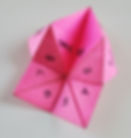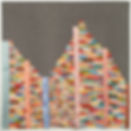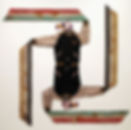top of page
Soft Power
By Matthew Kangas
Tacoma Art Museum, Tacoma, Washington
Exhibition cntinues through September 1, 2024
May 4, 2024

Marita Dingus, “Buddha as an African Enslaved” (detail), 1997-98, mixed media, 6 x 75’.
Courtesy of the International Sculpture Center, Hamilton Township, New Jersey
With the art-world’s acceptance first of ceramics, and then glass, it was inevitable that textiles and fiber art would also come to be accepted by the fine arts establishment. This coincided with the 1970s rise of feminism in the art world, largely driven by women who either worked in the medium or who gradually came to positions of power as curators, collectors, and directors. “Soft Power” is a welcome survey of current practices in cloth, textiles, weaving and other “soft” materials, not only by women artists historically associated with such domestic, utilitarian media but also by gay men and artists of color and indigenous origins.
Curator Ellen Ito’s net is cast wide, logically enough considering how varied and extensive are incorporations of threads, cloth, rubber, canvas, and other soft materials. Similarly unsurprising is the breadth of subject matter: emotive gender politics; racial prejudice; homophobia — both gay and lesbian — along with landscape and abstract assemblage. Ito points out a contemporary rage at injustice that prompts many of these artists to fabricate works that require enormous amounts of patience to sew, weave, and construct.

Marc Donbrosky, “Sexy! No!,” embroidery on folded paper. Courtesy of the artist and Platform Gallery, Seattle
Among the nearly fifty objects on view, two stand out in particular, and for different reasons. “Buddha as an African Enslaved” (1998) by Marita Dingus is a genuine masterpiece, stretching out to 75 feet in width, six feet tall. The loose weaving is an extraordinary cultural mash-up: a familiar reclining Buddha as seen in various Asian temples and the anguished posture of African captives transported to North America in the “middle journey” from freedom to slavery. Its loose, see-through weave in black threads and rope allow its heavy content to be carried through the length of the gallery.
The other work is not a masterpiece, but a shocking piece of fraudulent cultural expression. Only recently revealed through a U.S. Department of Interior investigation, “The Indigenous Struggle to Save the West was Won and Honor Lost” (2017) by the late Evergreen State College professor and curator Gail Tremblay is a vase of woven film stock made by an artist who claimed to be Native American but was recently exposed as an ethnic impostor. The work, included in a recent National Gallery of Art exhibition, “The Land Carries Our Ancestors: Contemporary Art by Native Americans,” was summarily removed when curators were informed. A similar move should be considered here; Tremblay’s professional life revolved around her “authenticity” as a curatorial spokesperson for Native American Art and as a maker, practitioner, and curator of group exhibitions. Her falsehood was a betrayal of both her professional standards and of the peoples she claimed to represent.

Marie Watt, “Tear This Wall Down,” 2007, wool blankets, satin binding and thread, 61 x 64”.
Courtesy of The Suburban Times, Lakewood, Washington
Elsewhere there is much to celebrate: Marc Dombrosky’s painstaking embroideries on found postcards and notes; Juventino Aranda’s repurposed striped Pendleton blanket; Lily Martina Lee’s photo-sequence of sites where bodies of missing and murdered Native American girls and women have been found; and Erika Harada’s remarkable suspended hangings of cut-out indigo-dyed panels based on traditional katazome Japanese stenciling techniques.
Unlike Aranda’s and Paul Komada’s abstract, repurposed commercial blankets, Marie Watt’s “Tear This Wall Down” (2007) is a completely hand-woven blanket. Watt is also responsible for a bronze casting of a gigantic stack of Indian blankets touching the museum’s exterior. Her stature and status as a leading Northwest Native American artist, unlike Tremblay’s, is secure. The title of her work is a sly allusion to President Reagan’s 1987 exhortation at the Berlin Wall to Soviet leader Mikhail Gorbachev to free East Germany. Watt, for her part, may be alluding to real and figurative walls in the U.S. separating settler and Indian territories and symbolizing geographic oppression and land seizure.

Maikoiyo Alley-Barnes, “Der Raububerfall,” 2014, unguents, custom chenille patches, letterman’s jackets, vintage fibers and
filaments, look-stained Hudson Bay blanket, 82 x 94 1/2”. Courtesy of the artist and Koplin Del Rio Gallery, Seattle
While Lee’s photographs set cloths in body silhouette shapes on the grounds where actual missing bodies were found, Maikoyiyo Alley-Barnes, Priscilla Dobler Dzul, and Moonyee Chau explicitly point up racial and gender injustices with words, captions and woven slogans, all elaborately executed in tapestries, blankets and shawls. Alley-Barnes’s wall hangings invoke the hollow promises of college sports along with attached Hudson Bay blankets, hunting jackets and letterman’s jackets, a veritable object list of prejudicial talismans. Dzul capitalizes on her Mexican heritage by memorializing the extinction of the Maya people, while Chau draws attention to Japanese taboos surrounding lesbians.

Alexis Lee Ortiz-Duarte, “Soft Power Tower,” 2023, installation of recycled rags, dimensions variable. Courtesy of the artist
Tall assemblages by Alexis Lee Ortiz-Duarte and Tuan Nguyen round out the highlights. Duarte’s “Soft Power Tower” (2023) of colorful, recycled rags extends over ten feet high. Three piles of rubble, including driftwood, tee-shirts, and sawdust by Nguyen are stacked over six feet high. “Soft Power” demonstrates that the once demeaned techniques of cloth are equal to the biggest and loudest statements possible; it’s within the power of the artists who fashion the various textile media to make their point.
Matthew Kangas writes regularly for Visual Art Source eNewsletter; Ceramics: Art & Perception (Australia); and Preview (Canada). Besides reviewing for many years at Art in America, American Craft, Art Ltd., Vanguard and Seattle Times, he is the author of numerous catalogs and monographs, the latest being the award-winning Italo Scanga 1932-2001. Four anthologies of his critical essays, reviews and interviews were issued by Midmarch Arts Press (New York) and available on Amazon at Books by Matthew Kangas.
bottom of page

